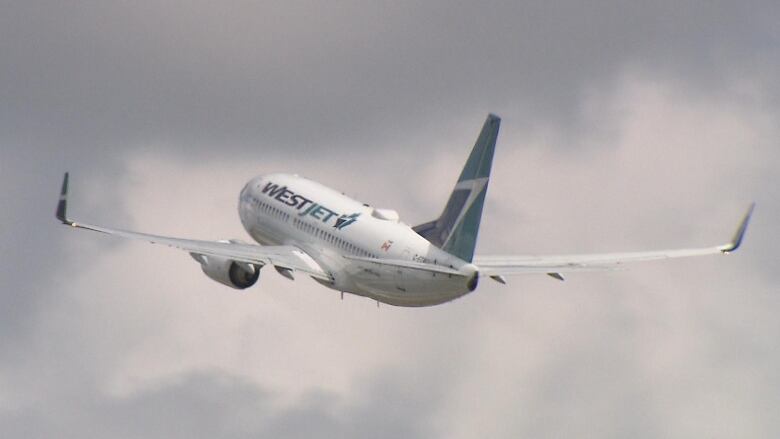After being devastated by COVID-19, Alberta's major airports have high hopes about the recovery
An analysis of publicly available data shows the devastating impact of the pandemic

Alberta's two largest airports are seeing signs that they can prepare their recovery for takeoff in the wake of a worldwide pandemicthat almost grounded the industry.
Airports have hemorrhaged money eversince restrictions to limitthe spread of the novel coronavirus brought air travel to a near-halt in early 2020.
"Any word less than 'devastating' is [inappropriate] for the impact on the aviation industry," said Barry Prentice, University of Manitoba professor who researches transportation economics.
"[Airports] are particularly hard-hit because literally all the revenues are associated with passenger movements and all the costs are essentially fixed."
CBC News analyzed publicly available passenger data for the Calgary and Edmonton airports from 2014 to June 2021 the most recent available as well as airportrevenue and net income reported in annual reports from fiscal 2014 through 2020.
The analysis shows how significantly the COVID-19 pandemic struck Alberta's airports.
Before COVID-19
Pre-pandemic, the Edmonton and Calgary airports were operating at or near record capacity.
The Edmonton International Airport (EIA) reported well over 7.6 million terminal passengers in 2019, down slightly from a peak in 2018. The Calgary International Airport saw nearly 18 million passengers in 2019.
Calgary reported nearly $432 million in revenue that fiscal year and made significant gains on its net loss. Edmonton made about $231.7 million in revenue and posted its first net gain since at least 2014, according to annual reports.
About two-thirds of that revenue was generated by passengers through airport improvement fees, concessions and parking.
The airports were operating at similar levels through the first two months of 2020. But traffic dropped by about 40 per cent that March because of the COVID-19 pandemic.
When the province launched its tough health restrictionsin April and May, passenger traffic in both airports plunged to about five per cent of what it had been in January and February.
Traffic picked up slightly in the summer of 2020, dipped again in the fall, and hashovered around those levels ever since, leaving airports to operate at a fraction of what they had been before the pandemic was declared.
Edmonton has yet to reach one-quarter of pre-pandemic passenger levels, while Calgary hasn't reached30 per cent, data shows.
"We have never experienced such a significant and really prolonged impact to travellers and to our finances," said EIA spokesperson Traci Bednard.
"We've had to take long-term measures just to ensure that we could safely continue to operate the airport."
Eye on the bottom line
The Edmonton airport's revenue in fiscal 2020 was about $103.5 million, and it posted a net loss of about $89.3 million. In Calgary, revenue dropped to roughly $174 million and it reported a net loss of nearly $242.6 million, according to annual reports.
Each airport cut operating expenses, such as shutting down unused sections of the airport and laying off or furloughing staff.
About one-third of Calgary Airport Authority staff were terminated or furloughed, according to its 2020 annual report. In Edmonton, EIA cut 35 to 40 per cent of their staff and did not spend on capital investments that were unrelated to safety, said Bednard.
But there's a limit to how much an airport can safely cut, Prentice noted.
Cutting too deeply could result in delays to retrain people and get systems running again, he said.
Meanwhile, airports needed to spend money on pandemic safety measures: enhanced sanitation, physical distancing and COVID-19 testing, among other initiatives, airport authority officials said.
Long road to recovery
Running an airport during the pandemic was like being "in a black hole and not knowing when you're going to get out," said Andy Davis, Calgary Airport Authority's senior director of terminal operations.
But now there's optimism that the recovery can begin.
A growing number of vaccinated people combined with loosened restrictions have boosted domestic air travel.
Last week, the Edmonton airport was seeing between 4,000 and 5,000 people departing from its gates each day, Bednard said. In Calgary, more than 101,000 people journeyed out of the airport in June an increase ofover 40,000 passengers fromMay.
The Calgary surge continued, with 140,000 passengers having departed as of July 21, according to information provided by Davis.
Fully vaccinated Americans can fly to Canadaon Aug.9, and other international travellers can touch down on Sept. 7. Both Bednard and Davis say airlines are re-establishing international routes.
But recovery is predicted to take about five years, according to annual reports and people interviewed for this story. And even then there's uncertainty.
The pent-up demand for flying has been countered by ongoingrequirements to wear a mask while travelling and the currently limited destinations, said Prentice.
Also, it takes time to re-establish routes and airports don't want to have to pause those routes again due to COVID-19, said Davis.
Prentice predicts airlines may lure travellers back with cheap tickets including to sun destinations but prices will have to rise again so companies can cover their debts. Such fluctuations could last for a few years, he said.
In Alberta, the airport recovery will also be affected by the strength of the economy and the price of oil, Prentice said.
A phenomenon Prentice calls the Zoom effect could also clip the wings of travel for business that could be done online.
The key for airports, as they starttheir rebuilding strategy, is to collectively reinforce that they have made travelling as safe as possible.
"We wish them the very best for their health because it's really important to our national conversation," he said, as the aviation industry helps keep Canadians connectedacross theirmassive country.












_(720p).jpg)


 OFFICIAL HD MUSIC VIDEO.jpg)
.jpg)



























































































